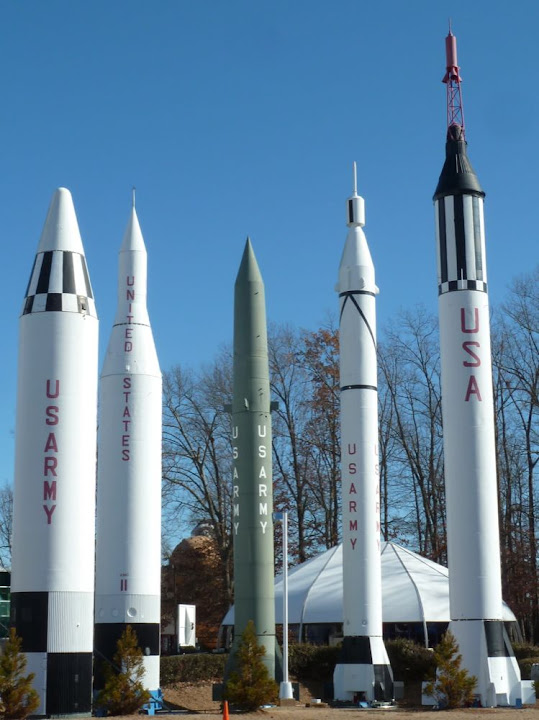pathfinder
The first thing that comes to mind when you think of Alabama is… rockets. Not really. Nonetheless this is where the rockets that took Americans to the Moon were built: Huntsville, Alabama, aptly nicknamed the Rocket City.
The team of Dr Wernher von Braun was brought to Huntsville when German scientists and engineers came to US as spoils of World War II. Von Braun made a pact with the devil - two devils in fact: German and American military - to realize his lifelong dream of flying to the Moon. He contributed to production of military rocketry hoping that developing missiles will one day transform into building spacecrafts. Ironically the Soviets, whom von Braun escaped by surrendering to Americans, gave his dreams the necessary push. Having launched the very first Earth satellite - Sputnik 1 - they put America in a frenzy to catch up. And von Braun could finally concentrate on creating a vehicle for manned exploration of space.
The history of the Apollo program powered by the pinacle of von Braun achievements - Saturn V - is depicted by the whole forest of rockets on display in the U.S. Space & Rocket Center. Its successor, the Space Shuttle program, is presented in the form of a shuttle mounted on top of an orange colored fuel tank flanked by two boosters. It looks like a shuttle but in reality Pathfinder was a simulator. It was not even named when used as such. It owes its name to a Japanese organization which refurbished it. The tank in the exhibit was also used for testing while the boosters were designed after the Challenger disaster but never put into production. They are even less complete now than the original setup: in 1999 NASA took boosters’ forward assemblies to use as spares.
NASA hunting for parts in junk yards is not surprising given that its finances shrunk from over 4% of the federal budget in the mid 60s to a tad above 0.5% by 2008. By comparison military gobbled 19% of the federal budget in 2010. But as high as this number is, it is still less then half of what it was in the 60s. It’s not military that takes away funds from the space exploration. If you must know, it’s entitlements which leaves my inner pacifist strangely unfulfilled. Blaming Medicare and Social Security for failure to fund a mission to Mars is somehow less satisfying.
The U.S. Space & Rocket Center is desperately trying to instill in the public the same desire to conquer space that drove von Braun. They offer astronaut training to kids and adults. Our friend Kevin, who has been to the Space Camp when he was 11, didn’t actually get off the ground, but had a fun time nonetheless. Kevin’s experience notwithstanding, what made von Braun retire in disappointment still rings true: American voters lost interest in space.
One would think that with the end of Apollo program and winding down shuttle missions, Huntsville would have lost its raison d’être. And the town looks sleepy and deserted on Sunday afternoon that we spend there. Appearances can be deceiving. A few days after we left Huntsville behind we listen to a story on Marketplace about a thriving town fueled by a defense spending. Much to our surprise they talk about Huntsville - home to the Army’s Redstone Arsenal and the nation’s second largest research park.
The history comes full circle: applying rockets to peaceful exploration of space turns out to be a short interlude and we are back to bellicose posturing. The interviewees in the story tout benefits of military spending to the local economy and general public pointing to spinoff jobs and technology. But the same is true of the space program or any type of government spending: where there is money there are jobs. It’s a pity that whatever is left in the budget after social causes are taken care of we choose to waste on means of destruction.
